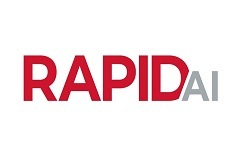 RapidAI has announced the US Food and Drug Administration (FDA) clearance of five new imaging modules: Rapid DeltaFuse, Rapid LMVO, Rapid MLS, Rapid OH and Rapid Aortic for measurement. The company claims that, together, these clearances mark a significant expansion of the Rapid Enterprise platform, reinforcing RapidAI’s identity as “the only platform purpose-built to bring deep clinical intelligence, seamless workflow integration and secure IT infrastructure to hospitals worldwide”.
RapidAI has announced the US Food and Drug Administration (FDA) clearance of five new imaging modules: Rapid DeltaFuse, Rapid LMVO, Rapid MLS, Rapid OH and Rapid Aortic for measurement. The company claims that, together, these clearances mark a significant expansion of the Rapid Enterprise platform, reinforcing RapidAI’s identity as “the only platform purpose-built to bring deep clinical intelligence, seamless workflow integration and secure IT infrastructure to hospitals worldwide”.
A press release details that these new clearances reaffirm RapidAI’s “unique approach” to building clinical depth to support decision-making across the entire patient journey—not just at the point of initial triage.
“Deep clinical AI [artificial intelligence] simplifies what used to be complex,” said Kiran Nandalur (Corewell Health Radiology, Royal Oak, USA). “By automatically calculating and visualising changes we once did manually, RapidAI can reduce the cognitive burden, and allow us to concentrate on clinical judgment and interpretation, not data manipulation. This enables us to spend more time on decisions that impact patient care.”
According to the company, Rapid DeltaFuse helps enable longer-term patient management by automatically aligning and co-registering serial non-contrast head computed tomography (CT) scans to visualise subtle intracranial changes, such as acute or chronic haemorrhages, solid masses, or ventricular changes, with studies showing that DeltaFuse can reduce radiologist comparison time by more than 36%.
Rapid LMVO enables complete brain coverage—across anterior, posterior, basilar and distal territories—on CT angiography (CTA) for ischaemic stroke. The company claims that, alongside perfusion and non-contrast modules, Rapid offers “the only complete stroke solution for the entire patient journey from non-contrast large vessel occlusion (LVO) detection all the way to advanced imaging analysis with the only CT and MR [magnetic resonance] perfusion analysis clinically validated in randomised clinical trials”.
Rapid MLS detects and quantifies suspected midline shift—a key indicator of brain injury—delivering objective visualisation with a mean absolute error of just 0.8mm, helping clinicians identify meaningful shifts earlier.
Rapid OH identifies suspected obstructive hydrocephalus by detecting cerebrospinal fluid accumulation in the lateral ventricles and generating alerts in less than one minute to expedite triage and transfer decisions. Rapid OH also qualifies for the Centers for Medicare and Medicaid Services (CMS) New Technology Add-on Payment (NTAP), underscoring its clinical and economic value, the company’s recent release claims.
Rapid Aortic analyses any CT scan that includes the aorta, including non-contrast and post-treatment studies, to help clinicians identify and track pathology from the arch to the iliac arteries. It delivers guideline-based measurements with consistent, inter-reader-free results, along with advanced automated 3D reconstruction and visualisation for confident surgical planning, RapidAI says, adding that automated longitudinal comparisons and follow-up notifications simplify surveillance, reduce variability, and save care teams time.
“The [US] FDA clearances of these solutions underscore our commitment to deep clinical AI and reducing cognitive burden for radiologists, as well as supporting superior decision-making and outcomes,” said Karim Karti, chief executive officer (CEO) of RapidAI. “RapidAI algorithms help set new standards by enabling radiologists to practice at the top of their licence, reducing cognitive burden and improving clinical decision-making for better outcomes in both acute and long-term settings.”
By pairing imaging precision with automation, these new capabilities reduce interpretation time, eliminate manual measurement variability, and enhance collaboration across clinical disciplines, the company states—further noting that “the result is not just faster imaging; it’s a more innovative, more connected model of care that helps hospitals see earlier, decide faster, and act with confidence”.










